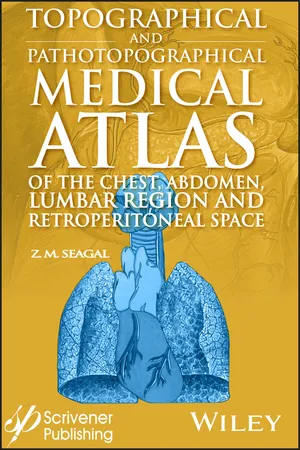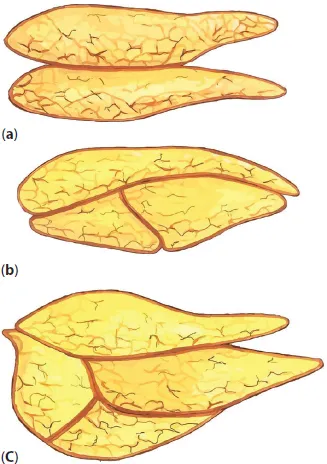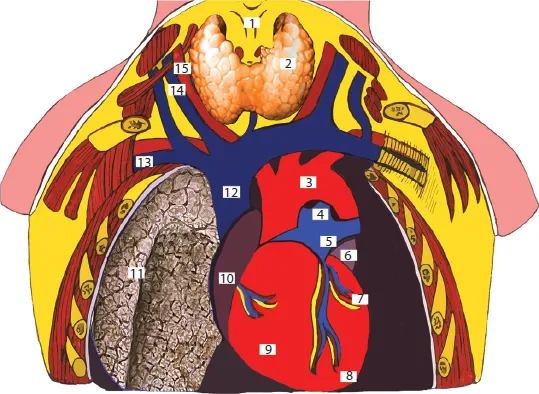
Topographical and Pathotopographical Medical Atlas of the Chest, Abdomen, Lumbar Region, and Retroperitoneal Space
- English
- ePUB (mobile friendly)
- Available on iOS & Android
Topographical and Pathotopographical Medical Atlas of the Chest, Abdomen, Lumbar Region, and Retroperitoneal Space
About This Book
The third medical atlas in this new series on the human body and filled with detailed pictures, this atlas details the topographical and pathotopographical anatomy of the chest, abdomen, lumbar region, and retroperitoneal space, a useful reference for medical professionals and students alike.
Written by an experienced and well-respected physician and professor, this new volume, building on the previous volume, Ultrasonic Topographical and Pathotopographical Anatomy, and its sequel, Topographical and Pathotopographical Medical Atlas of the Head and Neck, also available from Wiley-Scrivener, presents the ultrasonic topographical and pathotopographical anatomy of the chest, abdomen, lumbar region, and retroperitoneal space, offering further detail into these important areas for use by medical professionals.
This series of atlases of topographic and pathotopographic human anatomy is a fundamental and practically important series designed for doctors of all specializations and students of medical schools. Here you can find almost everything that is connected with the topographic and pathotopographic human anatomy, including original graphs of logical structures of topographic anatomy and development of congenital abnormalities, topography of different areas in layers, pathotopography, and computer and magnetic resonance imaging (MRI) of topographic and pathotopographic anatomy. Also you can find here new theoretical and practical sections of topographic anatomy developed by the author himself which are published for the first time. They are practically important for mastering the technique of operative interventions and denying the possibility of iatrogenic complications during operations.
This important new volume will be valuable to physicians, junior physicians, medical residents, lecturers in medicine, and medical students alike, either as a textbook or as a reference. It is a must-have for any physician's library.
Frequently asked questions
Information
Part 1
The Chest
Topographic Anatomy of the Chest
Chest Cavity Organs Projection and Layers of Chest





Table of contents
- Cover
- Title page
- Copyright page
- Preface
- Part 1: The Chest
- Part 2: Abdomen
- Part 3: Lumbar Region and Retroperitoneal Space
- Part 4: Pathotography Chest
- About the Author
- End User License Agreement